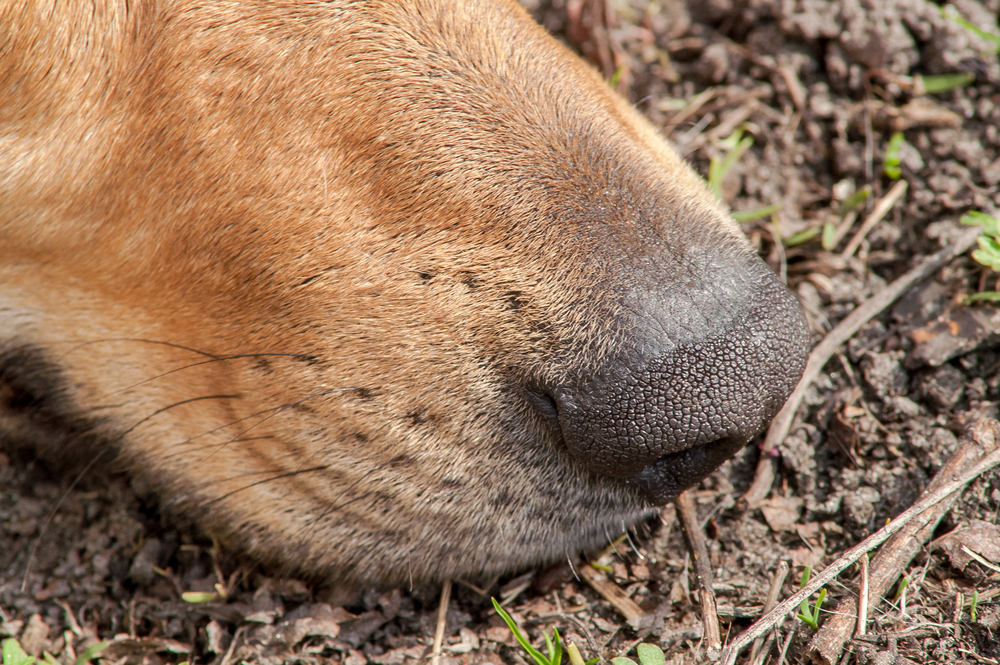The Beagle came bounding into class, dragging a 7-year-old girl desperately trying to maintain a grip on the leash. “Ms. Teoti,” the little girl whined, “Bonnie doesn’t want to go for walks. She wants to go for sniffs!”
Bonnie’s not alone. Dogs have more than 100 million sensory receptor sites in their nasal cavities. In comparison, we have only six million. The part of the canine brain devoted to analyzing odors is also 40 times bigger than ours. Dogs are built to smell things. This has worked to our advantage. People have taught dogs to sniff out drugs, agricultural contraband, bombs, bedbugs, low blood sugar, and more, including some types of cancer. When you’re being towed by this smelling machine on four paws, however, it may seem more like a disadvantage.
Walk Ways
What is your idea of a perfect walk with your dog? Is it moving along at a brisk clip, your dog anchored to your side? Is it a more relaxed stroll, with your dog close by on a loose leash? Now, what do you think your dog’s idea of a perfect walk would be? I can’t read a dog’s mind (despite what my clients suggest sometimes), but from their behavior I can determine that their priorities are not always the same as ours. You may want to tire your dog out. You may walk him just to get him to poop. Your dog likely just wants to SMELL ALL THE THINGS!
Most pet parents want their dogs to walk nicely next to them, without pulling them all over the place. It’s a great goal, and important for safety as well. You can have a dog that walks nicely with you, and get his sniffs in, too. Not allowing your dog to use his nose is like asking him to ignore a limb. I think sometimes we get so focused on manners that are important to us, that we can lose sight of what’s important to our dogs’ wellbeing. Walks are enrichment opportunities.
Your Dog’s Turn
So by all means, teach your dog to walk nicely. Then, add a cue for when he can go exploring. For example, I once had a client who used “Heel” for when she wanted her dog to walk precisely by her side with focus. She would also cue, “Shenanigans!” when the dog was allowed to plunge his nose into the environment. (“Shenanigans” is kind of a long cue, but it’s hysterical.) Mind you, her pup was not allowed to pull on leash during his “free time” – he still had to maintain a loose leash. But during this time there was no agenda, no specific amount of ground to cover, just the wanderings of a dog and his nose. This technique can improve your Heel, because the chance to sniff around is a great reward for good behavior.
While all dogs can smell better than we can, some breeds are more prone to follow their noses than others. Bonnie the Beagle and her fellow hounds are great examples. We’ve bred these dogs to follow scent for hunting. If you don’t hunt, it doesn’t change your dog’s DNA. He still wants and needs to follow scent. He’s not deliberately ignoring you; he’s just following his nature. Let him. You’ll be providing him with a wonderful enrichment experience. The next time you walk your dog, be sure to save some time for shenanigans.
This article was reviewed/edited by board-certified veterinary behaviorist Dr. Kenneth Martin and/or veterinary technician specialist in behavior Debbie Martin, LVT.
Teoti Anderson, CPDT-KA, KPA-CTP, is the vice president of A Dog’s Best Friend, located in Ft. Lauderdale, Florida. A professional dog trainer for more than 23 years, she is the author of The Dog Behavior Problem Solver, Dog Fancy Ultimate Guide to Dog Training, Animal Planet Dogs 101 Dog Training, Puppy Care and Training, The Super Simple Guide to Housetraining, Quick & Easy Crate Training, and Your Outta Control Puppy. A popular conference speaker, she has given presentations to pet owners, humane organizations, and fellow trainers across the United States and internationally.








